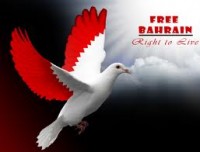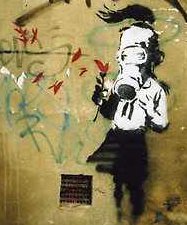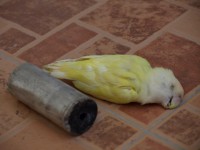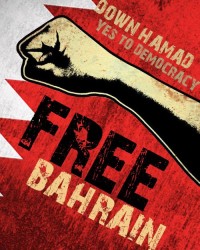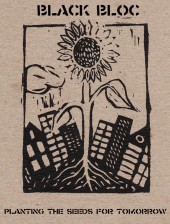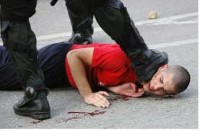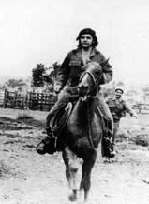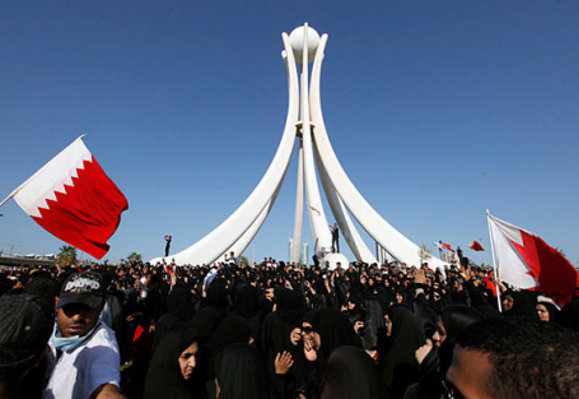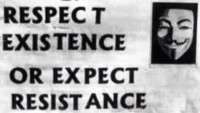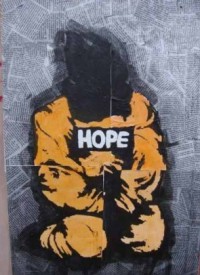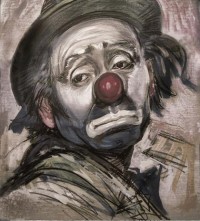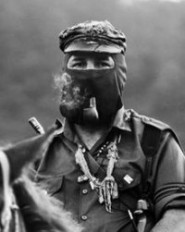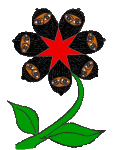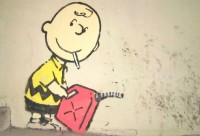King Hamad’s farewell celebration to US and UN Human Rights Delegations
December 22, 2011 Comments Off on King Hamad’s farewell celebration to US and UN Human Rights Delegations
Chloropicrin is also known as vomiting gas. Inhalation of it’s mist or fumes causes projectile vomiting in humans. Easily made and mixed with CS gas and delivery systems.
Chloropicrin:
Chloropicrin is also known as vomiting gas. Though not really a gas but a liquid, the inhalation of it’s mist or fumes causes projectile vomiting in humans. It’s production is easy but requires some special equipment. Needed are a chemical hood or glove box, protective clothing and a gas mask or clean air respirator.
Chloropicrin (known in chemwarfare circles as PS) can be mixed with either CN or CS teargas. The makes a very nasty chemweapon. The effects of both substances are magnified. The effects of this mix does not wear off in an hour or so but can continue for a week or more. There are reports of effected people committing suicide because of the pain and discomfort.
PS or Chloropicrin can cause the throat and stomach muscles to rip because of the force of the vomiting. …source
December 22, 2011 Comments Off on Chloropicrin is also known as vomiting gas. Inhalation of it’s mist or fumes causes projectile vomiting in humans. Easily made and mixed with CS gas and delivery systems.
CR Gas Yellow Peper like Smell – many times stronger(more toxic) than CS Gas
CR gas or dibenzoxazepine, chemically dibenz[b,f][1,4]oxazepine, is an incapacitating agent and a lachrymatory agent. CR was developed by the British Ministry of Defence as a riot control agent.
CR Gas Physical properties
CR is a pale yellow crystalline solid with a pepper-like odor. It is slightly soluble in water and does not degrade in it. CR is usually presented as a microparticulate solid, in the form of suspension in a propylene glycol based liquid. Contrary to its common name, it is not actually a gas but is solid at room temperature.
The dibenz[b,f][1,4]oxazepine moiety is present in the typical antipsychotic drug loxapine, but unlike CR, loxapine is not reactive and is not an irritant. CR was first synthesised in 1962.
These gases are usually fired in canisters (LACR) that heat up, producing an aerosol cloud at a steady rate.
Effects
CR gas is a lachrymatory agent (LA) exerting its effects through activation of the TRPA1 channel. Its effects are approximately 6 to 10 times more powerful than those of CS gas. CR causes intense skin irritation, particularly around moist areas, blepharospasm causing temporary blindness, coughing and gasping for breath, and panic. It is capable of causing immediate incapacitation. It is a suspected carcinogen. It is toxic, but less so than CS gas, by ingestion and exposure. However, it can be lethal in large quantities. In a poorly ventilated space, an individual may inhale a lethal dose within minutes. Death is caused by asphyxiation and pulmonary edema.
The effect of CR is long-term and persistent. CR can persist on surfaces, especially porous ones, for up to 60 days.
Treatment
While CS can be decontaminated with a large amount of water, use of water may exacerbate the effects of CR. Skin contaminated with CR gas may become extremely painful in contact with water for up to 48 hours after contamination.
Medical treatment is mostly palliative. The contaminated clothing has to be removed. The eyes and skin can be washed, the eye pain can be alleviated with medications.
Use
In the late 1980s, CR was used in the townships in South Africa. It caused some fatalities, particularly among children. Republican groups in northern Ireland have alleged that British Army and Royal Ulster Constabulary units used CR gas against Republican prisoners.
Egypt
More recently, during the protests against the military government in Egypt, Egyptian security forces have begun using CR gas in addition to the more commonly-used, less debilitating CS gas. One protester described the gas as making them feel “as if your eyes are about to fall out; then you have trouble breathing, and you lose your sight”. Mohammed ElBaradei also confirmed via Twitter that “tear gas with [a] nerve agent” is being used in Tahrir Square. …more
December 22, 2011 No Comments
Another Village under gas assault 22 December
December 22, 2011 Comments Off on Another Village under gas assault 22 December
Sitra Police Torch Village – 22 December
December 22, 2011 Comments Off on Sitra Police Torch Village – 22 December
Abu Saiba – Bahrain Thursday, 22 December 2011
December 22, 2011 Comments Off on Abu Saiba – Bahrain Thursday, 22 December 2011
The Arab Awakening: A Bahraini activist struggles to keep protests alive
The Arab Awakening: A Bahraini activist struggles to keep protests alive
by Adrian Humphreys – Dec 22, 2011 – National Post
Even before the Feb. 14 protest erupted in Bahrain, a small island state in the Persian Gulf, Nabeel Rajab had tasted the sting of the police baton and felt the anger of an enraged oligarchy.
He had been marked as a troublesome dissident for years.
But as civil unrest grew in the Arab Spring, and as the kingdom’s neighbours in the Middle East and North Africa saw their strong-arm leaders toppled, Mr. Rajab learned the harsh extent of King Hamad bin Isa Al-Khalifa’s displeasure.
“My house is attacked regularly. They punish me for talking. They beat me — they kidnap me from my home to beat me for a few hours. It has become common,” he said dryly in a telephone interview.
“It is part of my life routine, now. I would barely notice it if my staff didn’t tell me.”
And yet, he is one of the lucky ones. About 50 people have died during clashes between protesters and security forces as the government refuses to budge on demands for democratic reforms.
At the start, there was reason to believe Bahrain would be the next to sweep aside its powerful leaders.
Protests saw the highest participation rate. With a population of about one million citizens, its largest demonstration in the capital, Manama, drew about 200,000 people — 25% of all adults.
Inspired by the Arab Spring, a march was called for Feb. 14, the 10th anniversary of the National Action Charter of Bahrain. To dampen enthusiasm for it, King Hamad announced a gift of US$2,667 to each family to commemorate the date.
Despite the bribe, thousands took to the streets, gathering at the Pearl Roundabout, pledging non-violence. Their core demands were moderate in comparison to the cries for immediate regime change that rang out elsewhere: political reform, an end to corruption and increased civil participation.
Although billed as a “Day of Rage,” the marches were orderly. One sign held aloft read, “Our movement is peaceful and our demands are legitimate.”
ADAM JAN/AFP/Getty Images files
U.S. lawyer Mark S. Sullivan and president of Bahrain’s Human Rights Society Nabeel Rajab in 2006. “The [Bahraini] government uses a lot of violence but I am confident in the people’s commitment,” Rajab says.
Encouraged by Saudi Arabia, Bahrain’s powerful neighbour to the west, the government’s response was unforgiving. Security forces fired rubber bullets and tear gas into the crowd, killing two protesters and injuring more than a dozen.
One key difference between the reaction in Bahrain and that in some other countries was the kingdom’s sectarian split. Bahrainis’ discontent was fuelled in part by discrimination by the ruling elites, which are drawn from the Sunni branch of Islam, against the masses, largely adherents to the Shia branch.
The Bahraini security forces were Sunni and had little sympathy for the Shiites’ cause, unlike in Egypt where many in the military supported the protests. Worse still, there was deep suspicion the protest was fuelled by Iran, a distrusted Shiite state.
A raid on the protesters’ encampment brought more deaths, and the funerals for each protester produced larger and fiercer demonstrations. The modest demands turned into calls for revolution.
The killings also sparked broad and diverse support for dissent, recruiting members of the middle and professional classes. Doctors treating the injured while protesting the regime became symbols of the struggle.
By March, Bahrain’s sympathetic neighbours, led by the Saudis, were supplying manpower, equipment and financial support to crush the protest.
“When the government began to attack the protesters it became more difficult,” Mr. Rajab said.
[Read more →]
December 22, 2011 Comments Off on The Arab Awakening: A Bahraini activist struggles to keep protests alive


